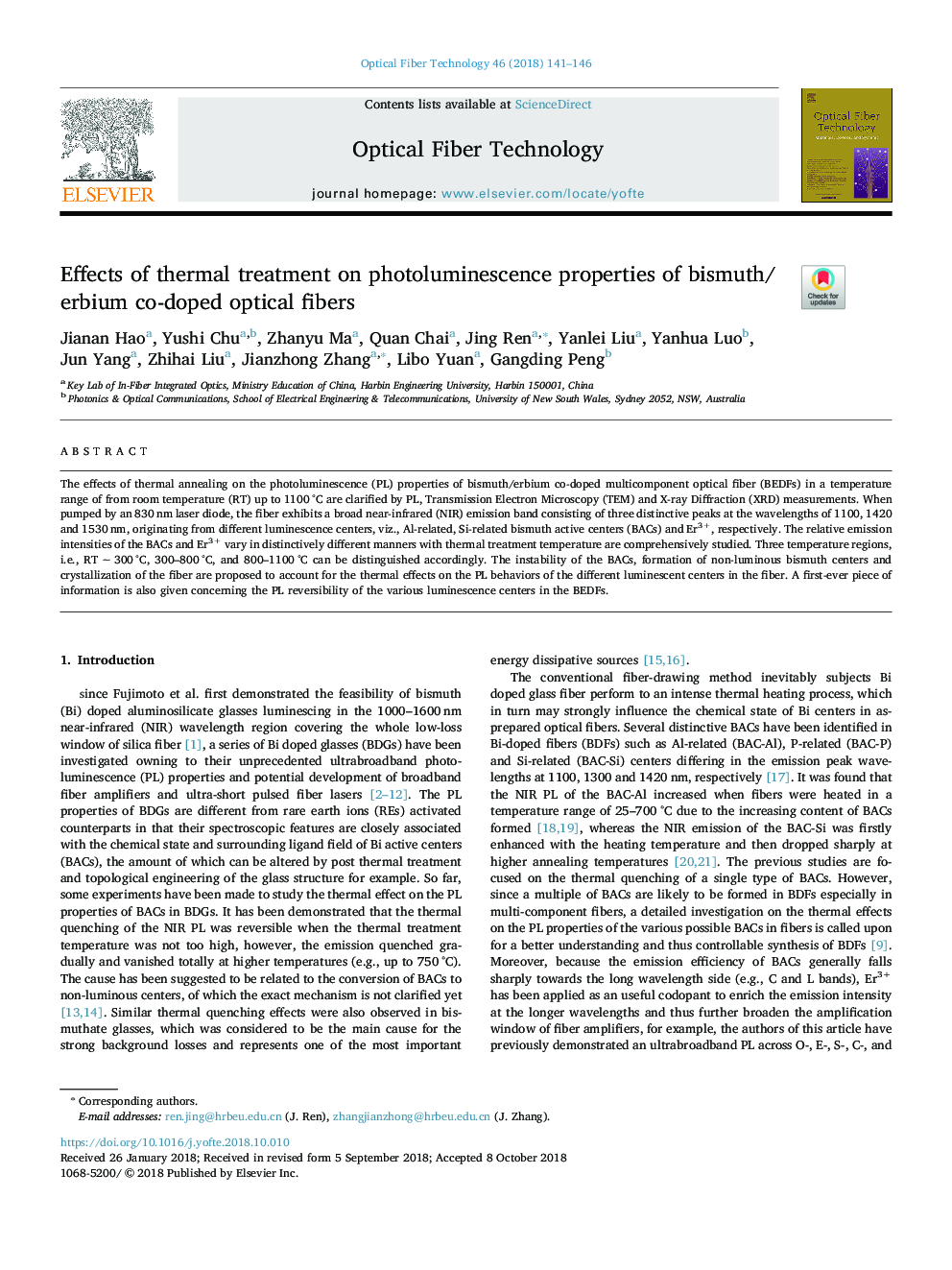| Article ID | Journal | Published Year | Pages | File Type |
|---|---|---|---|---|
| 11023955 | Optical Fiber Technology | 2018 | 6 Pages |
Abstract
The effects of thermal annealing on the photoluminescence (PL) properties of bismuth/erbium co-doped multicomponent optical fiber (BEDFs) in a temperature range of from room temperature (RT) up to 1100â¯Â°C are clarified by PL, Transmission Electron Microscopy (TEM) and X-ray Diffraction (XRD) measurements. When pumped by an 830â¯nm laser diode, the fiber exhibits a broad near-infrared (NIR) emission band consisting of three distinctive peaks at the wavelengths of 1100, 1420 and 1530â¯nm, originating from different luminescence centers, viz., Al-related, Si-related bismuth active centers (BACs) and Er3+, respectively. The relative emission intensities of the BACs and Er3+ vary in distinctively different manners with thermal treatment temperature are comprehensively studied. Three temperature regions, i.e., RTâ¯â¼â¯300â¯Â°C, 300-800â¯Â°C, and 800-1100â¯Â°C can be distinguished accordingly. The instability of the BACs, formation of non-luminous bismuth centers and crystallization of the fiber are proposed to account for the thermal effects on the PL behaviors of the different luminescent centers in the fiber. A first-ever piece of information is also given concerning the PL reversibility of the various luminescence centers in the BEDFs.
Related Topics
Physical Sciences and Engineering
Computer Science
Computer Networks and Communications
Authors
Jianan Hao, Yushi Chu, Zhanyu Ma, Quan Chai, Jing Ren, Yanlei Liu, Yanhua Luo, Jun Yang, Zhihai Liu, Jianzhong Zhang, Libo Yuan, Gangding Peng,
